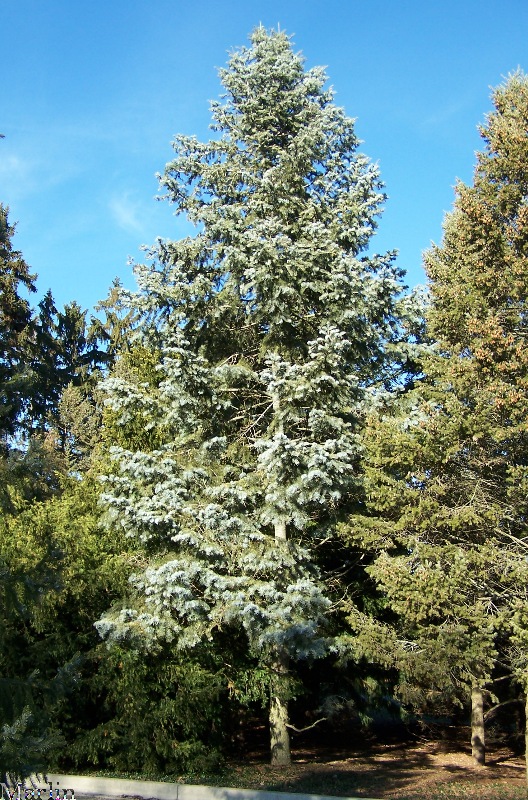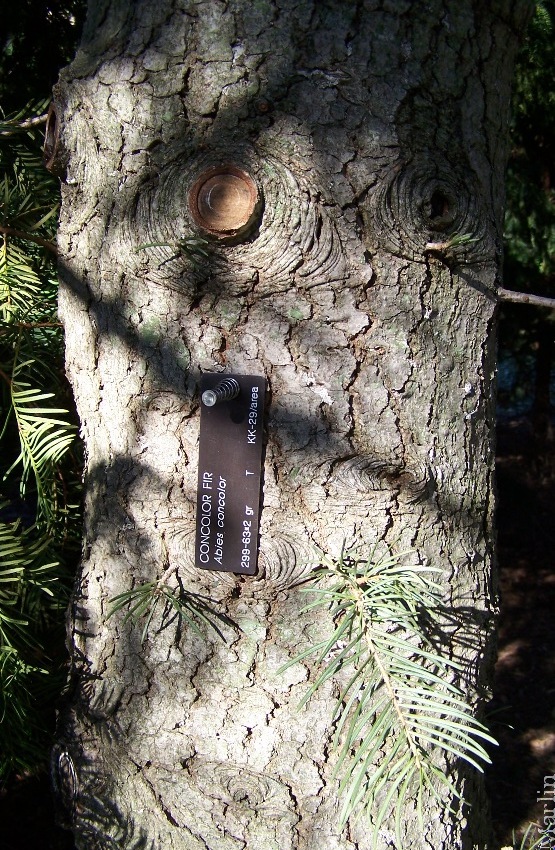 |
White Fir – Abies concolor Family Pinaceae: Pine, Cedar, Spruce, Fir Native to Colorado, southern Oregon to southern California and Mexico, commonly called concolor fir. |
Custom Search
|
|
Long considered undesirable for timber, white fir is finally being recognized as a highly productive, valuable tree species. White fir reaches its best development and maximum size in the central Sierra Nevada of California, where the record specimen is 58.5 m (192 ft) tall and measures 271 cm (106.6 in) in d.b.h. Large but not exceptional specimens, on good sites, range from 40 to 55 m (131 to 180 ft) tall and from 99 to 165 cm (39 to 65 in) in d.b.h. in California and southwestern Oregon and to 41 m (134 ft) tall and 124 cm (49 in) in d.b.h. in Arizona and New Mexico.
Rocky Mountain white fir grows on high mountains, typically with long winters, moderate to heavy snowpacks, and short growing seasons. California white fir grows in cold, high elevations and in warm-to-hot low elevations. Throughout its natural range, white fir grows on a variety of soils developed from almost every kind of parent material. These materials include recent volcanic and igneous rocks of nearly all compositions, large areas of intrusives (mostly granites), and various metamorphics, including serpentine. Sedimentary materials range from limestone, sandstone, and shale to unconsolidated Pleistocene lake deposits. At low elevations California white fir is an aggressive, tolerant species that appears to have been held in check by frequent natural fires. Extensive fire control efforts, however, have reduced fire frequency. As a result, white fir is becoming a major stand component in California at elevations and on sites where originally it was minor. Dense fir regeneration beneath older stands of less tolerant trees is common and threatens a major change in species composition. In many places, especially with giant sequoia, such changes are undesirable, and control measures, including reintroduction of fire, are necessary [1]. |
 Best in full sun in deep, rich, moist, well-drained soil. |
 |
Annosus root rot (Heterobasidion annosum) is present in all conifer stands and may become a major disease problem as management of white fir increases. Once established, the disease affects trees within a slowly expanding, circular infection center. Spread from tree to tree is through root contacts. New infection centers begin by aerial spread of spores and infection of basal wounds and freshly cut stumps. In true fir, annosus root rot usually does not kill directly but produces considerable moisture stress and loss of vigor that predispose the tree to attack by bark beetles, notably Scolytus. Direct damage resulting from infection is restricted primarily to heart rot of butt and major roots, leading to windthrow and stem breakage. Some degree of control is available through silvicultural means and use of borax on freshly cut stumps.
Other rots of major significance include the yellow cap fungus (Pholiota limonella), Indian paint fungus (Echindontium tinctorium), and white pocket rot (Phellinus pini). Yellow cap fungus causes heavy losses from butt rot and enters through fire scars and basal wounds. Indian paint fungus is a major heart rot organism. This fungus probably infects fir in the same manner it does western hemlock. Entry is through branchlets less than 2 mm (0.08 in) in diameter. The fungus can remain dormant for up to 50 years before being activated by injury to the tree. Rot commonly extends 3 m (11 ft) below and 6 m (20 ft) above each characteristic fruiting body (4). No effective control is known although trees less than 40 years old are relatively free of rot because they have so little heartwood. In the white fir-grand fir complex of Idaho, the fungus was found in 97 percent of the trees that had decay. Almost 80 percent of the decay in old-growth grand fir-white fir stands of eastern Oregon and Washington is caused by Indian paint fungus; in California, it is much less common. Insects from seven genera attack white fir cones and seeds. Two cause damage with considerable loss of seed. Seed maggots (Earomyia spp.) are the most abundant and damaging. The fir cone looper (Eupithecia spermaphaga) covers almost the entire range of white fir and periodically causes considerable local damage [1]. |
References
|
| Tree Encyclopedia / North American Insects & Spiders is dedicated to providing scientific and educational resources for our users through use of large images and macro photographs of flora and fauna. |
 |
Tree Encyclopedia | Tree Index |
